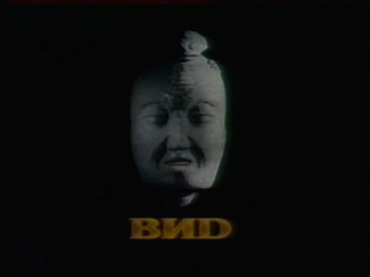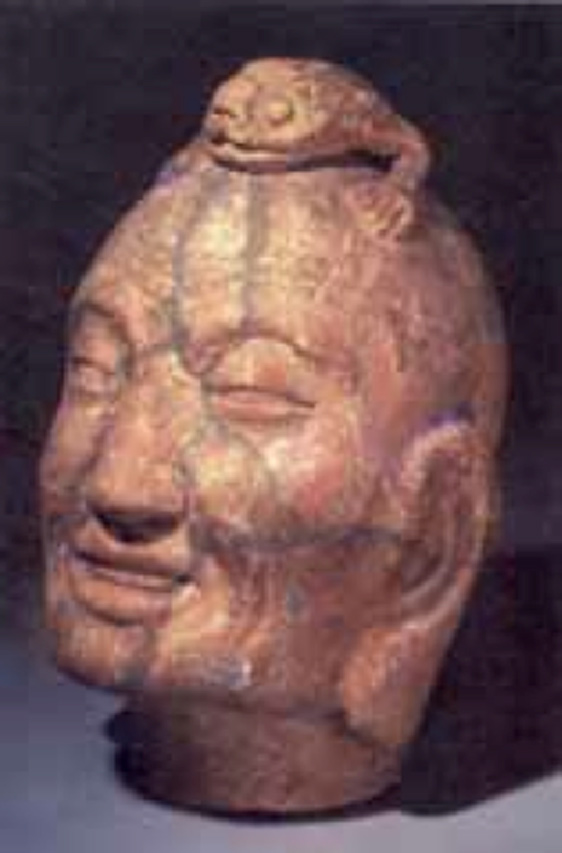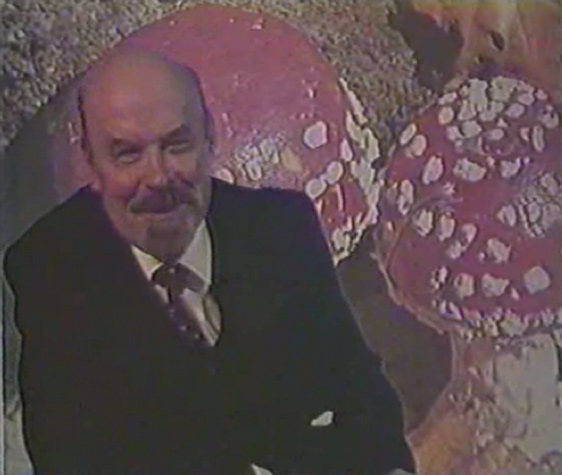The hidden meanings of Destined to be Happy exhibition - The Interview with Irina Korina
10 January 2017 | By
09 January 2017 | By
Inside the Picture: Installation Art in Three Acts - by Jane A. Sharp
19 November 2016 | By
Conversations with Andrei Monastyrski - by Sabine Hänsgen
17 November 2016 | By
Thinking Pictures | Introduction - by Jane A. Sharp
15 November 2016 | By
31 October 2016 | By
Tatlin and his objects - by James McLean
02 August 2016 | By
Housing, interior design and the Soviet woman during the Khrushchev era - by Jemimah Hudson
02 August 2016 | By
Dressing the Soviet Woman Part 3: "Are Russians Women?" Vogue on Soviet Vanity - by Waleria Dorogova
18 May 2016 | By
Dressing the Soviet Woman Part 1 - by Waleria Dorogova
13 May 2016 | By
Eisenstein's Circle: Interview With Artist Alisa Oleva
31 March 2016 | By
Mescherin and his Elektronik Orchestra - by James McLean
13 January 2016 | By
SSEES Centenary Film Festival Opening Night - A review by Georgina Saunders
27 October 2015 | By
Nijinsky's Jeux by Olivia Bašić
28 July 2015 | By
Learning the theremin by Ortino
06 July 2015 | By
Impressions of Post- Soviet Warsaw by Harriet Halsey
05 May 2015 | By
Facing the Monument: Facing the Future
11 March 2015 | By Bazarov
'Bolt' and the problem of Soviet ballet, 1931
16 February 2015 | By Ivan Sollertinsky
Some Thoughts on the Ballets Russes Abroad
16 December 2014 | By Isabel Stockholm
Last Orders for the Grand Duchy
11 December 2014 | By Bazarov
Rozanova and Malevich – Racing Towards Abstraction?
15 October 2014 | By Mollie Arbuthnot
Cold War Curios: Chasing Down Classics of Soviet Design
25 September 2014 | By
Walter Spies, Moscow 1895 – Indonesia 1942
13 August 2014 | By Bazarov
'Lenin is a Mushroom' and Other Spoofs from the Late Soviet Era
07 August 2014 | By Eugenia Ellanskaya
From Canvas to Fabric: Liubov Popova and Sonia Delaunay
29 July 2014 | By Alex Chiriac
My Communist Childhood: Growing up in Soviet Romania
21 July 2014 | By Alex Chiriac
Monumental Misconceptions: The Artist as Liberator of Forgotten Art
12 May 2014 | By Rachel Hajek
28 April 2014 | By Rachel Hajek
An Orgy Becomes a Brawl: Chagall's Illustrations for Gogol's Dead Souls
14 April 2014 | By Josephine Roulet
KINO/FILM | Stone Lithography Demonstration at the London Print Studio
08 April 2014 | By Alex Chiriac
24 March 2014 | By Renée-Claude Landry
Book review | A Mysterious Accord: 65 Maximiliana, or the Illegal Practice of Astronomy
19 March 2014 | By Rosie Rockel
Leading Ladies: Laura Knight and the Ballets Russes
10 March 2014 | By Bazarov
Exhibition Review | Cash flow: The Russian Pavilion at the 2013 Venice Biennale
03 March 2014 | By Rosie Rockel
24 February 2014 | By Ellie Pavey
Guest Blog | Pulsating Crystals
17 February 2014 | By Robert Chandler Chandler
Theatre Review | Portrait as Presence in Fortune’s Fool (1848) by Ivan Turgenev
10 February 2014 | By Bazarov
03 February 2014 | By Paul Rennie
Amazons in Australia – Unravelling Space and Place Down-Under
27 January 2014 | By Bazarov
Exhibition Review | Siberia and the East, fire and ice. A synthesis of the indigenous and the exotic
11 December 2013 | By Nina Lobanov-Rostovsky
Shostakovich: A Russian Composer?
05 December 2013 | By Bazarov
Marianne von Werefkin: Western Art – Russian Soul
05 November 2013 | By Bazarov
Chagall Self-portraits at the Musée Chagall, Nice/St Paul-de-Vence
28 September 2013 | By Bazarov
31 July 2013 | By Richard Barling
Exhibition review | Lissitsky — Kabakov: Utopia and Reality
25 April 2013 | By Richard Barling
Exhibition review | Ilya and Emilia Kabakov: The Happiest Man
18 April 2013 | By Richard Barling
07 August 2014 | By Eugenia Ellanskaya

The terrifying 'VID' placeholder
Late 80s Russia was no longer your stereotypical Soviet ‘Other’ lurking behind the Iron Curtain. The end approached: the end of comradeship, of childhoods in the Pioneers, of full employment. The end of a predictable socialist utopian future, only to be replaced by what seemed unthinkable madness: a great torrent of new music, literature, media and culture, bringing with it new 'perestroika' or 'glasnost' people. The merciless rebuilding of everything that was so heartily cherished for decades has produced people like myself with a 'born in the USSR' stamp in their passports, but a totally different future. Let’s look some of the bizarre 80s popular media and culture stunts to get a sense of Russian popular culture's taste for the apocalypse in the last days of the Soviet Union.
As a child I remember this eerie and culturally totally inexplicable white mask, the symbol of 80s TV production company VID. It would appear suddenly in between programmes with an equally disturbing musical accompaniment. The disembodied frowning face, crowned by what appears to be a toad on its bald skull, haunted my worst nightmares. Looking back, it is in fact an appropriate symbol of the total loss of control and censorship that gave way to the then-inconceivable cultural references and experimentations at the time.

The original sculpture featured in the VID logotype: a ceramic mask of the ancient Chinese philosopher Guo Xiang
Another gem was a 1991 TV spoof by the notorious Sergei Kuryokhin. His claim that 'Lenin was in fact a mushroom' was a bizarre revelation to many. Armed with some very convincing diagrams, philosophical backing and Kuryokhin’s own handsomely intellectual face, the video quickly caught on, becoming the first media storm in the USSR. The episode, broadcast live on The Fifth Wheel television programme, successfully gave the illusion of a considered intellectual discussion, during which Kuryokhin and journalist Sergei Sholokhov purported to expose the mysteries of the Russian Revolution. Using numerous literary, philosophical and ethnographic references Kuryokhin argued, really quite persuasively, that Lenin predicted the Revolution through the avid consumption of hallucinogenic mushrooms, which slowly came to replace his personality.

Still from the infamous 'Lenin is a Mushroom' spoof, broadcast in 1991
Growing up then, you just didn't know what to believe anymore. Kuryokhin’s main activities were based on musical experimentation - I can’t help wishing I was old enough to appreciate the genius and madness of his impromptu New Age shows, known as 'Pop Mechanics'. His 1984 project involved a continuously changing cast and featured some the most iconic musicians of the time: Kino, AuktsYon, Akvarium, Avia, amongst others. 'Pop Mechanics' was a new theatrical genre, a formula for stage performance without limits. Avant-garde jazz and experimental performance art were wrapped up in an extraordinary phenomenological show. Anything could happen on stage with celebrity rock musicians, artists, clowns and animals involved. Imagine a stern Soviet military choir being constantly interrupted by a recklessly bleating goat. As much as Kuryokhin warned his participants of the improvisatory nature of his shows, it didn’t seem to stop him from getting in trouble afterwards. This was of course 'unofficial' culture, but was well known for its daring musical and visual provocation.
Faith healer Allan Chumak in action
Crowning the 80s Soviet broadcasting extravaganza were the mass televised séances with faith healer Allan Chumak. The sports commentator-turned-healer psychically “charged” water and was so convincing that people were even rumoured to charge water remotely via a television screen. Another prominent TV persona of the 80s, Anatoliy Kashpirovskiy, could boast an even more enviable skill - anaesthetising patients undergoing surgical operations - all on live TV.
At this point the normalities of an ordered Soviet life remained in place, but the instances described above capture a brief and final stage in Soviet popular culture. The demise of almost a century of cultural censorship opened up a treasure box of bizarre and unimagined media provocations of which the above are just a few vivid examples. In the 80s the suppressed Soviet taste for satire was unleashed at last, hinting at things that had long remained unsaid.


